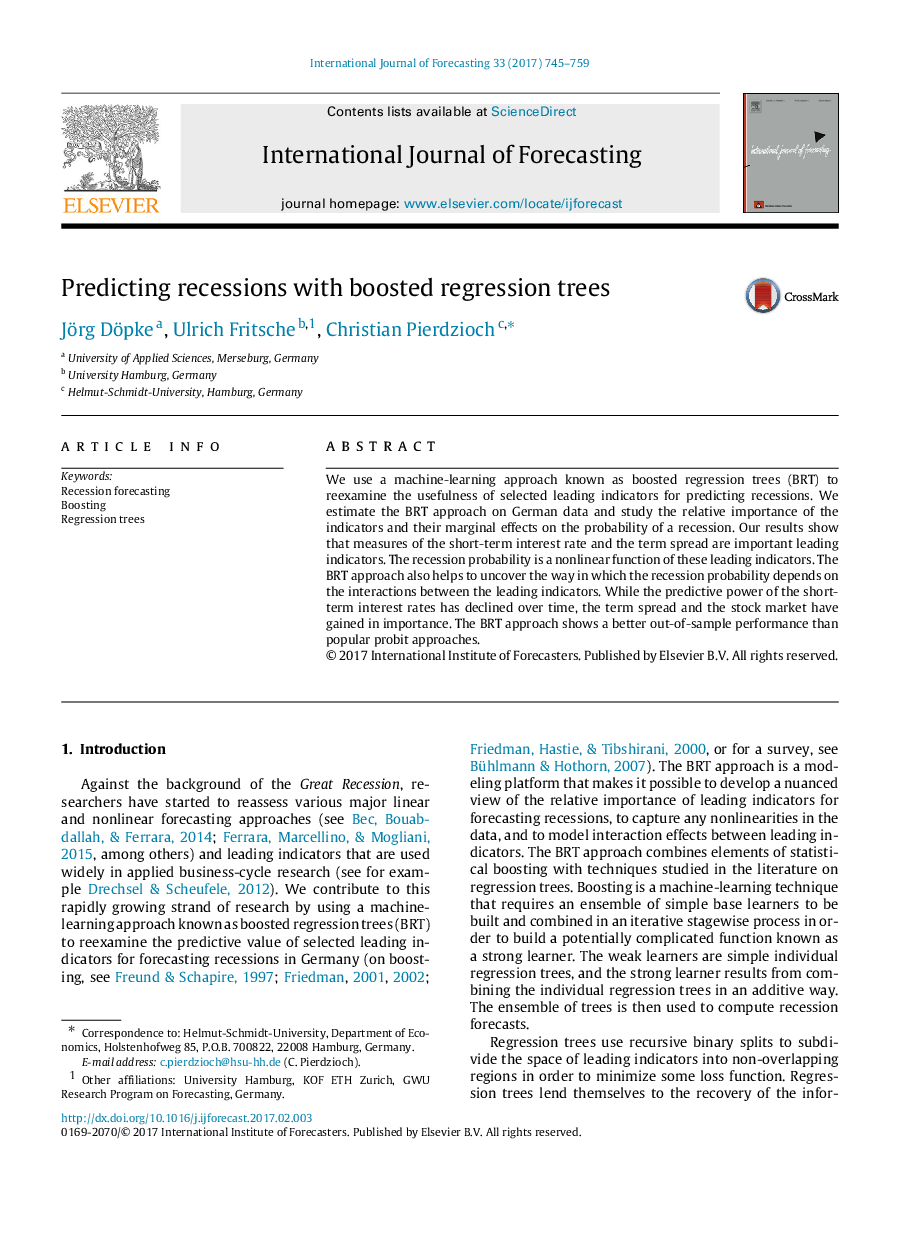| Article ID | Journal | Published Year | Pages | File Type |
|---|---|---|---|---|
| 5106343 | International Journal of Forecasting | 2017 | 15 Pages |
Abstract
We use a machine-learning approach known as boosted regression trees (BRT) to reexamine the usefulness of selected leading indicators for predicting recessions. We estimate the BRT approach on German data and study the relative importance of the indicators and their marginal effects on the probability of a recession. Our results show that measures of the short-term interest rate and the term spread are important leading indicators. The recession probability is a nonlinear function of these leading indicators. The BRT approach also helps to uncover the way in which the recession probability depends on the interactions between the leading indicators. While the predictive power of the short-term interest rates has declined over time, the term spread and the stock market have gained in importance. The BRT approach shows a better out-of-sample performance than popular probit approaches.
Keywords
Related Topics
Social Sciences and Humanities
Business, Management and Accounting
Business and International Management
Authors
Jörg Döpke, Ulrich Fritsche, Christian Pierdzioch,
